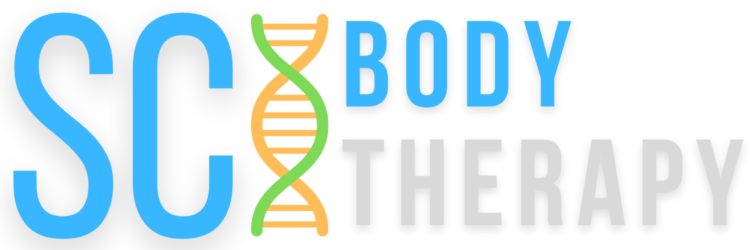If you’re new to getting massage and certainly if your a veteran client, you have heard of term trigger point lobbed about. You may have been given some vague description of the phenomenon that included terms like: knots, toxins, adhesions, lactic acid, sticky muscle fibers, fascia and you probably came out of the conversation still wondering what the hell your therapist was talking about.
Trigger point is one those terms that is often used by therapists to give themselves the air of credibility. Sadly, most massage schools do not teach trigger point in a way that produces competent practitioners. And even continuing education on the topic can be pseudoscientific in nature.
What the heck is trigger point?
Trigger point therapy is a specific mode of muscular therapy that is NOT something I would recommend for your first visit, unless you have experience with this modality. At the very least, I would recommend reading this entire page.
This modality is one of the few that can be described as painful. However, I’d like to qualify, that in clinical massage there is such a thing as good pain. Many clients describe it “the sweet ache” and often enjoy the sensation.
I know, it sounds crazy, but I promise it’s not.
WARNING: SCIENCE AHEAD
Trigger point is based on the theory that muscle tissue at a cellular level can begin to malfunction. Muscles at a microscopic level are composed of molecular motors composed of proteins (actin and myosin). These protein motors use both chemical and electrical signal from your body to initiate and suspend muscle movement and as we age they can begin to malfunction.
When this happens a small “muscle knot” can develop. Muscle knots are better described as a microscopic cramp or a TRIGGER POINT; it is an area that for an unknown reason is now stuck in a contracted state. Nearly every adult has these, but not all trigger points cause pain or at least they don’t cause prominent pain. Others go on to become monsters. And I truly mean monsters.
As the small area of tissue continues to stay contracted it begins to produces normal, but harmful metabolites like pyruvate, lactic acid, and CO2 in addition the ion gradients of Calcium and Magnesium can be altered causing sustained muscle fiber contraction (this is also what happens in a full on muscle cramp).
These areas can often grow. As the metabolites build up they begin to effect the house next door and then pretty soon the whole block is bad, then the neighborhood, and eventually you get an area of muscle that looks like Detroit.
You’ll notice I don’t use the word “toxin” and honestly you should be afraid of any massage therapist who does. Toxin is a lazy term and has very little meaning in science. It also leads people to try bizarre things that in the end are just really expensive time wasters.
Treatment Method Detail:
In trigger point we are trying to interact directly with tissue that is exquisitely painful and we are going to do so with a great deal of dirc
If you have had trigger point done somewhere else you may also find my methods unique. In my experience, many therapists do not receive in-depth Trigger Point training and there anatomical knowledge may be lackluster as well. This set the stage for a session that feels more like a game of battleship than a targeted treatment.
When you come in for session:
1.) We will have a conversation about what is bothering you. I will ask questions like:
What does the pain feel like?
What makes the pain worse?
What makes it better?
I will do a hands on exam of the area.
2.) We will begin with a tissue warm up, which is part massage and part investigation. I will be asking lots of questions and asking for feedback.
Essentially we are making a map of Trigger Point pain referral zones
True trigger points should present with signs like:
♦ Muscle twitching
♦ Mimics and or intensifies the pain
♦ Causes spasms or cramping
♦ Intense “sweet ache” when pressure is applied
3.) Once we find a true trigger point I will use direct pressure to sink into it. During this process I will be asking about your pain level, referral patterns, etc.. We generally aim for a moderately high (7-8 out of 10) rating of discomfort. Once this is reached the pressure is held for 30 to 120 seconds.
If needed the process will be repeated either immediately or after a short break. Obviously, I will never go past your threshold. We do not push through pain because it is not necessary and it can make the problem worse!
In trigger point we are having a very direct conversation with your nervous system and we want to be direct, but there no need to yell.
4.) Once we have addressed a majority of the trouble spots the session ends with a round of massage that encourages blood flow and will promote localized inflammation. I know inflammation is a bad word these days, but it’s also a necessary and beneficial part of the healing process.
5.) If I have done my job you will notice a difference as soon as you get off the table. In most cases full results will not be evident for a few hours. The next day you may have some residual pain where pressure was applied. In very rare cases you might see a small bruise, but I do everything I can to minimize this side effect.
For particularly bad trigger points (the monster ones) we may use a tactic known as spray and stretch. This is a local treatment that involves cryotherapy and very specific muscle mobilization.


2 Replies to “The Skinny on Trigger Point Therapy”